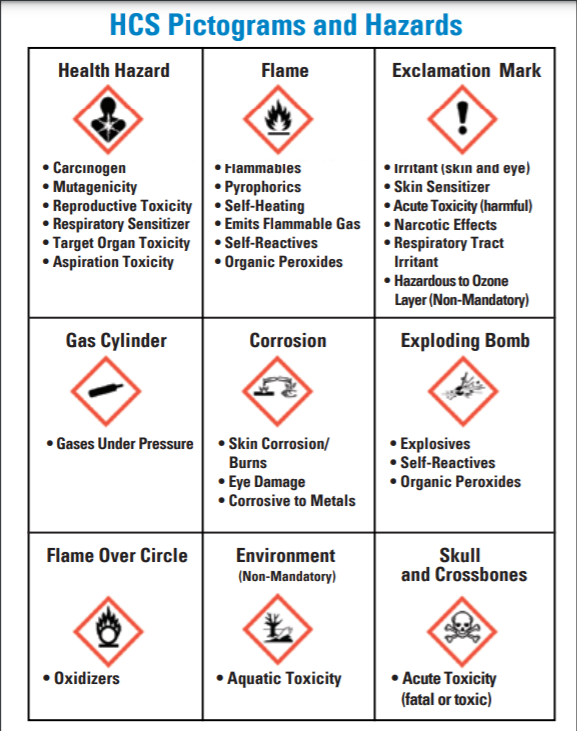Many of us, in our daily lives, use chemical products and get exposed to them. These products that may be hazardous or not, when misused, can cause serious health, environmental problems or even deaths. This is what happened with me when one of my family members was cleaning the toilet using detergents. She decided to mix chlorine (bleach) and ammonia, thinking that it will clean better. This mixture ended up by reacting and producing a very toxic gas (chloramine). When inhaled, she started to feel pain in her chest and couldn’t breathe anymore. The door was also closed, and by chance I was passing and heard the cough. When I entered to help her, I also felt discomfort due to the gas. Moreover, the products’ labels concerning its physical hazards and reactivity weren’t clear at all.
Industries are producing a lot of new chemical products daily. According to the International Labor Organization (ILO), “one thousand new chemicals come onto the market every year, and about 100 000 chemical substances are used on a global scale”. The consumption is increasing as well during the COVID-19 pandemic period. In fact, people are overbuying and storing many types of chemical products during lockdown (PMR Editorial staff, 2020), without understanding the risks of strong concentrated detergents, if misused. Due to the lockdown, and as result of difficulty in finding pre-mixed solutions, people are tempted to look in their cabinet and mix their own chemical solutions to get better cleanliness. However, this might put every member in the household at risk, since mixing incompatible chemicals may create a combination of very toxic gases.
The growth in the global market of detergents is resulting in many risks affecting us on several scales:
- Humanitarian: Inhalation, absorption or ingestion of chemical substances can cause harmful effects such as intoxication, corrosive injuries, or even serious diseases and direct death depending on the exposure. (ILO, 1993)
- Environmental: Chemical detergents or surfactants are not easily degradable in the environment, causing pollution and increasing the concentration of hydrocarbons in the aqueous environment. Due to frequent use of chemical products during the COVID-19 pandemic, the concentration of surfactants in the wastewater generated from the household and other institutions are expected to increase. Also, their treatment in wastewater treatment plants is challenging. (Daverey, Dutta, 2020)
These problems forced countries to place international standards regarding chemical products.
Know your labels!
OSHA has adopted new hazardous chemical labeling requirements as part of its recent revision of the Hazard Communication Standard (HCS) so that workers, suppliers have more information of how to use dangerous chemicals, to avoid any injuries related to exposure.
The HCS requires that each container of hazardous chemicals leaving the workplace is labeled, tagged, or marked with:
- Product identifier: how hazardous the chemical is.
- Signal word: alert the reader, e.g., “Danger” and “Warning.”
- Hazard statement(s): nature and degree of the hazard(s).
- Precautionary statement(s): measures that should be taken to minimize or prevent adverse effects resulting from exposure.
- Pictogram(s): communicate specific information about the hazards of a chemical. The required pictograms consist of a red square frame set at a point with a black hazard symbol on a white background, sufficiently wide to be clearly visible.
- Name, address and telephone number of the chemical manufacturer, importer, or other party.
- Any additional Information: personal protective equipment (PPE) pictogram, directions of use, expiration date, or fill date.
Some labels are limited by design, for this reason Safety Data Sheets (SDS) are the more complete resource for details regarding hazardous chemicals.
